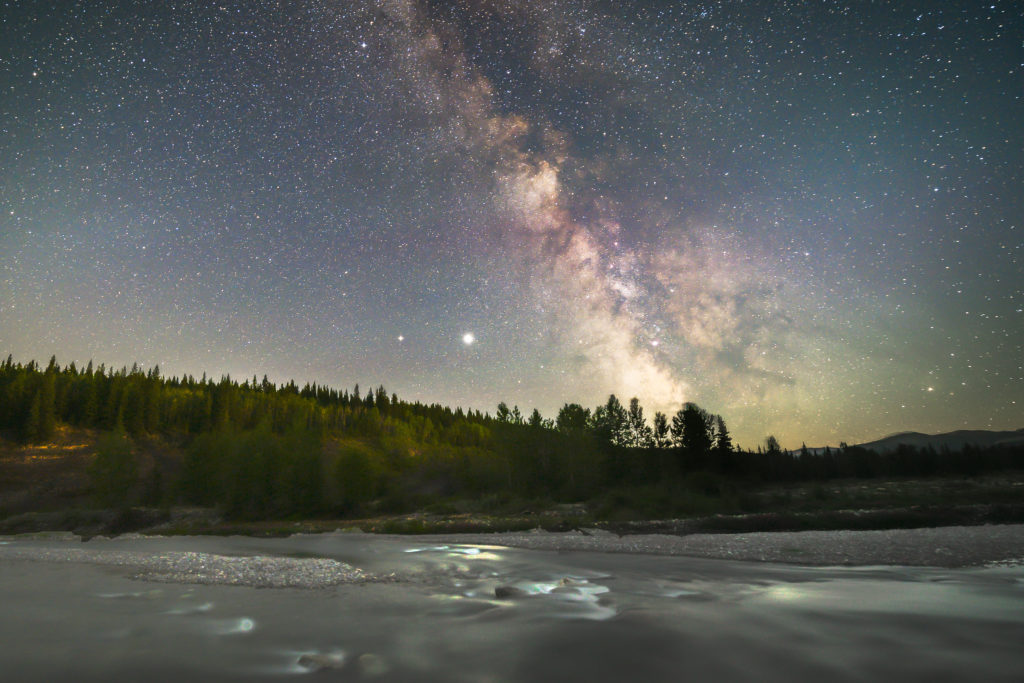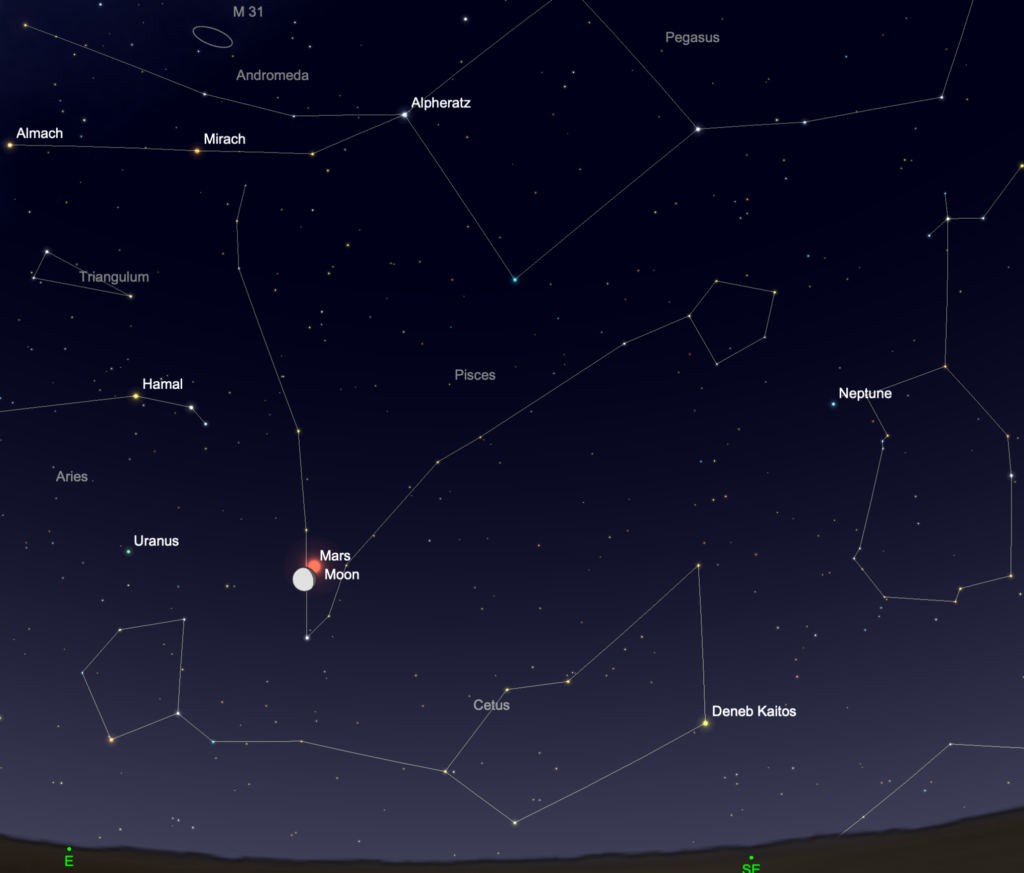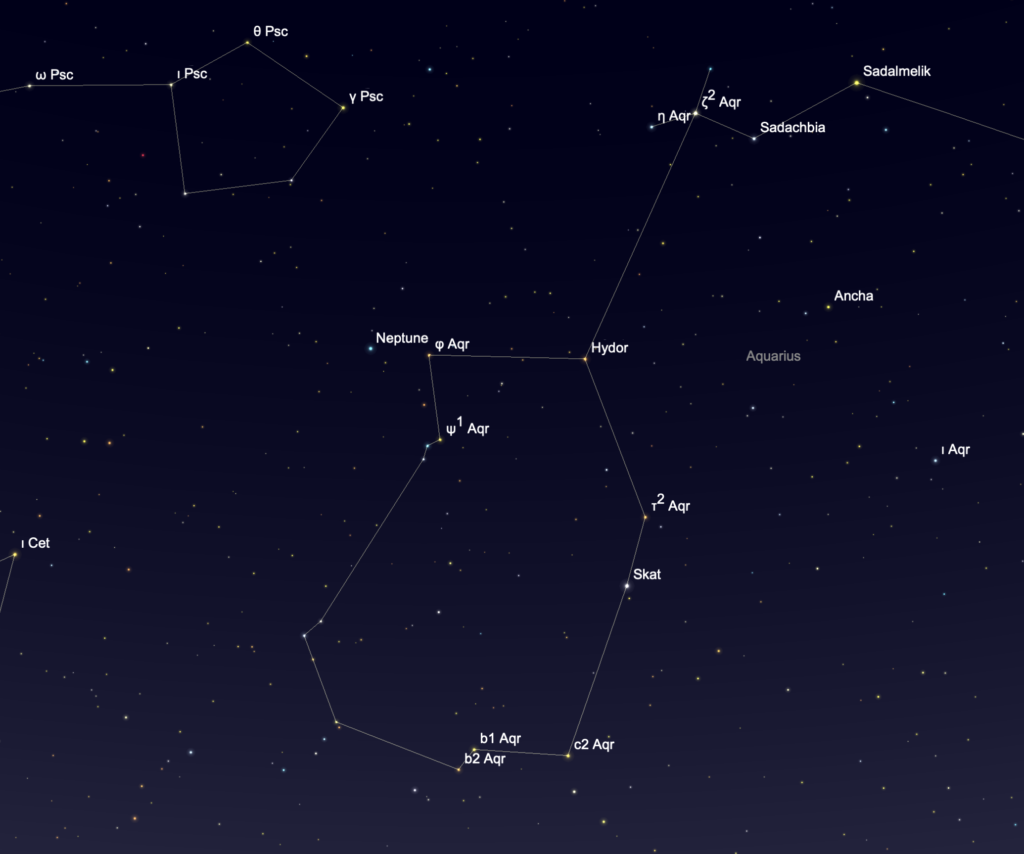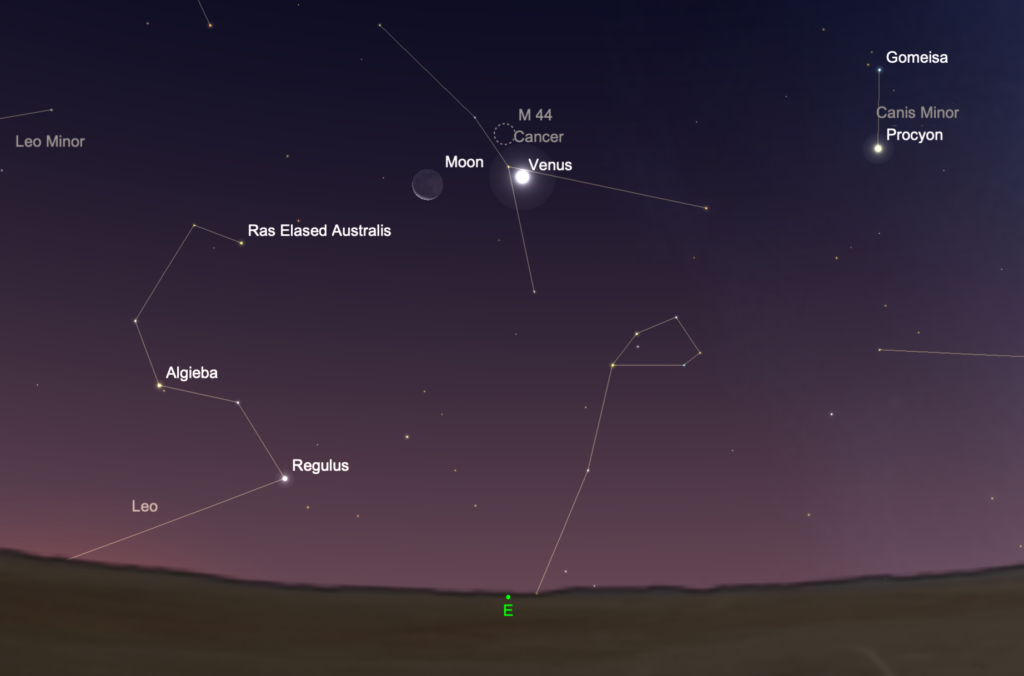
September offers stargazers a final few weeks to see the long, starry arc of the Milky Way and all its attendant splendor. The rich constellations of Scorpius and Sagittarius are moving westward, but the lengthening nights keep these stars accessible for a little longer, at least for observers in the northern hemisphere. In the east, the relatively star-poor constellations of Pegasus, Capricornus, and Piscis Austrinus are moving into view along with hundreds of galaxies accessible with a small telescope. Also in September, Jupiter and Saturn linger in the southwestern sky to liven up the sky, the planet Neptune reaches opposition, and Mercury makes its best evening apparition of the year for southern-hemisphere observers. Here’s what to see in the night sky this month…
2 September. Full Moon, 05:22UT

5-6 Sept. The brightening planet Mars hangs just off the darkened limb of the waning gibbous Moon on the night of September 5-6. The pair rise around 10 p.m. local time and make their closest approach at about 05:00UT. For the next many days, Mars lies about 5 degrees north of the star Alpha Piscium (Alrischa). Already striking at magnitude -1.9 and far brighter than any star, Mars reaches its stationary point on September 9 and begins retrograde (westward) motion against the background stars on its way to a spectacular opposition on October 13.
Sept. 10. Last Quarter Moon, 09:26UT

Sept. 11. Neptune, the most distant major planet from the Sun, reaches opposition tonight in the constellation Aquarius. At a distance of about 4.3 billion km from Earth, Neptune shines at magnitude +7.8 with a disk just 2.4 arc-second across. It’s never a spectacular sight, even in a big telescope, but it’s worth the effort to glimpse this quiet and beautiful ice giant at the edge of the solar system. At opposition Neptune lies about 2 degrees east-northeast of the 4th-magnitude star Phi Aquarii. Neptune is visible in binoculars, but you need a telescope to perceive its tiny disk and blue-green color. The planet’s disk will appear to grow larger as magnification is increased, unlike a star, which offers a good way to ensure you have the planet in your field of view.
If you need a real challenge and you have a 10-inch or larger telescope at your disposal, try to see Neptune’s largest moon Triton. At a very dim magnitude 13.4, it’s an object that never appears to wander more than 17 arc-seconds from the planet.

Sept. 14. Look eastward at dawn to see the brilliant planet Venus and a waning crescent Moon. Hoist a pair of binoculars to see a third celestial sight, the Beehive star cluster (Messier 44), joining the show. The three objects form an isosceles triangle about 5 degrees on a side. Still at magnitude -4.1, the planet is highly prominent in the early-morning eastern sky well above the horizon. In a telescope, the planet’s disk is about ⅔ illuminated.
Sept. 17. New Moon, 11:00UT
Sept. 17-30. Over the next couple of weeks, northern-hemisphere observers who have very dark sky can see the zodiacal light in the eastern sky about 90-120 minutes before sunrise in the northern hemisphere. This whitish glowing wedge of light appears to thrust upward from the horizon (see image above). The zodiacal light, sometimes called the “False Dawn”, is simply sunlight reflected off tiny dust particles in the inner solar system.

Sept. 21-22. Mercury lies less than ½ degree from the 1st-magnitude star Spica in western sky after sunset. Because of the angle of the ecliptic, this conjunction is most prominent for southern-hemisphere observers. The planet shines at magnitude 0.0, about 2.5 times brighter than Spica, and it appears just below Spica. Mercury spends all of September getting further above the western horizon each day on its way to its greatest eastern elongation on October 1.
Sept. 24. First Quarter Moon, 01:55UT
Sept. 25-26. Jupiter and Saturn sit just above a waxing gibbous Moon. The two gas giants are a couple of months past opposition but are still big and bright enough to reveal detail in a telescope. The two planets are about 8 degrees apart in mid-September, and they will continue to move closer together until they’re separated by just 0.1 degrees on December 21 at their closest conjunction in nearly 400 years.